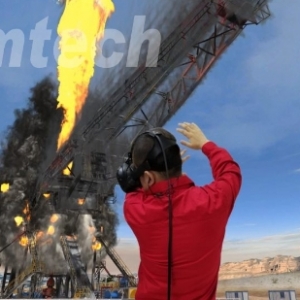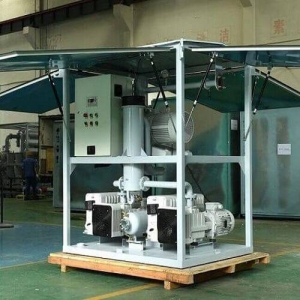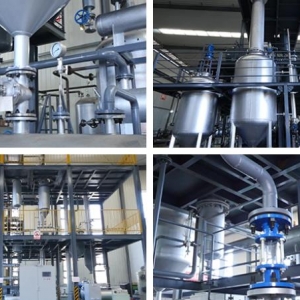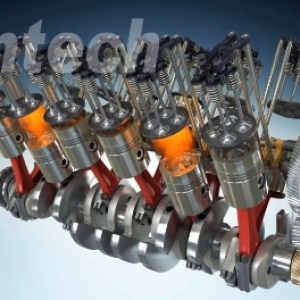Oil and gas drilling is a multifaceted and crucial component of the energy industry, unlocking vast reserves beneath the Earth's surface. Various drilling techniques have evolved over the years, each tailored to specific geological conditions and project requirements. This article aims to delve into the diverse types of oil and gas drilling methods, shedding light on their unique characteristics, challenges, and the pivotal role played by drilling simulators in training the next generation of skilled professionals.
- Conventional Drilling: Conventional drilling, also known as rotary drilling, is the most widely used method in the oil and gas industry. It involves the use of a rotating drill bit attached to the bottom of a drill string. As the drill string rotates, the bit grinds through the rock, and drilling mud is circulated to cool the bit and carry cuttings to the surface. Conventional drilling is suitable for a wide range of geological formations and depths.
- Directional Drilling: Directional drilling allows operators to control the wellbore trajectory, deviating from vertical to reach specific subsurface targets. This method is particularly useful in offshore drilling or in situations where multiple wells can be drilled from a single location. Directional drilling minimizes environmental impact and maximizes reservoir access.
- Horizontal Drilling: Horizontal drilling involves drilling vertically to a certain depth and then gradually turning the wellbore to a horizontal orientation. This method is employed to increase the contact area with the reservoir, enhancing oil and gas recovery. Horizontal drilling is especially effective in tight formations where traditional vertical drilling might yield limited results.
- Hydraulic Fracturing (Fracking): Hydraulic fracturing, commonly known as fracking, is a technique used to stimulate the flow of hydrocarbons from tight rock formations. It involves injecting a high-pressure fluid into the well to create fractures in the rock, allowing oil and gas to flow more freely. Fracking has been instrumental in unlocking previously inaccessible reserves.
- Coiled Tubing Drilling: Coiled tubing drilling utilizes a continuous coil of tubing instead of traditional jointed pipe. This method is often employed for re-entry drilling, well intervention, and drilling in challenging environments. Coiled tubing drilling is known for its efficiency and versatility in various downhole operations.
The Role of Drilling Simulators
As the oil and gas industry continues to advance, the demand for skilled drilling professionals becomes increasingly critical. Drilling simulators play a pivotal role in preparing individuals for the challenges of real-world drilling operations. These advanced training tools offer a simulated environment where trainees can practice various drilling techniques, hone their decision-making skills, and navigate through complex scenarios without the associated risks.
Key Contributions of Drilling Simulators
- Realistic Scenario Replication: Drilling simulators replicate the challenges and scenarios encountered in actual drilling operations. Trainees can practice drilling techniques, wellbore navigation, and response to unexpected conditions in a controlled virtual environment.
- Equipment Familiarization: Simulators allow trainees to familiarize themselves with drilling equipment and tools, including drill bits, mud systems, and blowout preventers. This hands-on experience contributes to better operational understanding and proficiency.
- Safety Training: Drilling simulators provide a risk-free platform for trainees to practice emergency response procedures and safety protocols. This enhances the ability of drilling professionals to mitigate risks and respond effectively to unforeseen events.
- Decision-Making Skills: Simulators facilitate the development of decision-making skills by presenting trainees with realistic scenarios that require quick and informed responses. This prepares professionals for the dynamic and fast-paced nature of drilling operations.
- Efficiency and Cost-Effectiveness: Training with drilling simulators significantly reduces the need for physical resources, travel, and potential operational downtime. This makes training programs more cost-effective and efficient, contributing to the overall competency of the workforce.
Conclusion
The diverse types of oil and gas drilling methods play a crucial role in meeting the world's energy demands. As the industry evolves, drilling simulators emerge as indispensable tools in training the next generation of drilling professionals. By offering a realistic, risk-free, and cost-effective learning environment, these simulators contribute to the development of a highly skilled workforce capable of navigating the complexities of drilling operations with precision and expertise. As technology continues to advance, the integration of drilling simulators will remain at the forefront of ensuring the safe and efficient exploration and extraction of valuable energy resources.






